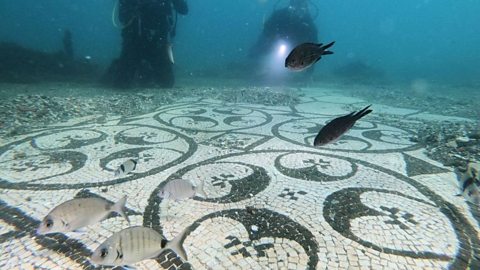If you’re looking for a bit of interior design inspiration, why not take your cues from the ancient world?
Ancient civilisations came up with ingenious ways to build the best homes for their environment – from materials and designs to keep rooms cool in the desert, to systems that kept their houses clean.
Even as ruins, the palaces and villas built by these ancient civilisations are still stunning to behold, with their colourful mosaics, delicate frescoes and prominent columns.
Join ґуПуґ«ГЅ Bitesize as we discover just what made a house a home for these ancient civilisations.
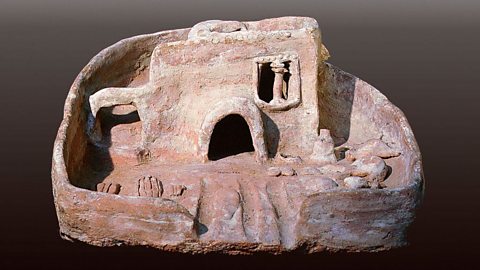
What did ancient houses look like?
We have an idea of what ordinary ancient Egyptian homes might have looked like because small model houses, known as soul houses, have been discovered in graves.
The primary building material was mudbrick, made by mixing together soil, sand, straw and water, pressing the mixture into a block and then leaving it to dry and harden in the sun. As well as being cheap, mudbrick had the added benefit of being a good insulator, helping to keep the temperature down. Additional structural support was then added by using palm logs.
Thanks to Egypt’s arid climate, the house’s flat roofs didn't collect loads of rain and so could also be utilised as a living area, and even somewhere cooler to sleep in the hot months. Some roofs had hooded vents to further aid the circulation of cool air into the house below, like an early take on air conditioning.
Typically, the front of the house would be a reception area with private rooms to the rear, in which the family ate and slept. Larger homes might also have a courtyard and dedicated bathrooms. Windows were small and positioned high on the wall.
Occasionally, houses would be built with stone foundations, with some of the best-preserved ruins being found at the village of Deir-el Medina, home to many of the craftsmen who worked on the nearby tombs in the Valley of the Kings. These houses had three or four rooms, including a cellar and open-air kitchen.

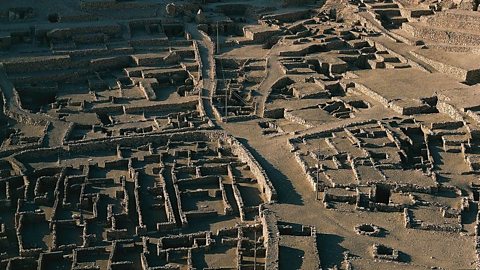
How did ancient bathrooms work?
When it came to household sanitation, the ancient Harappan civilisation of the Indus Valley (modern-day Pakistan and Northern India) were innovators.
Networks of pipes were built into homes which were then connected to a shared drainage system, made up of underground pipes and roadside gutters. Water from purpose-built wells could be poured down a toilet - a A narrow, steep channel which objects can travel down with a toilet seat placed on top - flushing the waste into the drain ditches to be transported away. Fitting terracotta pipes into the walls meant that bathrooms could be located on the upper story of a building, while the addition of tar helped to keep them watertight.
The ancient city of Mohenjo-daro (in the Sindh province of Pakistan) had an estimated 700 wells, many of which belonged to private homes. Clean water was in ready supply from underground, counteracting the low annual rainfall.
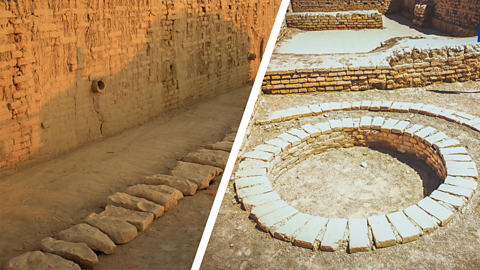
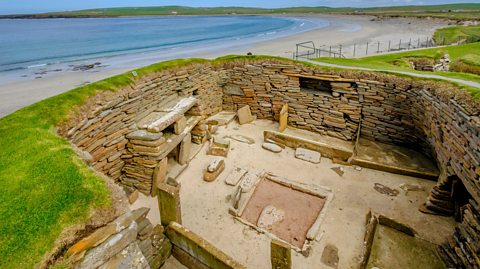
The ancient Greeks also made use of extensive pipe systems to introduce a level of comfort to their bathrooms. On the island of Santorini, the ancient settlement of Akrotiri had dual water pipes. This strongly suggests that one pipe provided cold water while the other provided water heated by geothermal springs, a benefit of the volcanic nature of the island.
Terracotta baths have been found at the ruins of Olynthos, in northwestern Greece. They look a bit different to our baths, as they weren’t designed for someone to be fully immersed. The water would only come to roughly your waist. Nearby, there might be a free-standing pedestal with shallow basin on top, known as a louter, which could be used for washing the hands and face.
Toilets were a bit more basic in the Neolithic village of Skara Brae, on the Island of Orkney in Scotland. However, they were indoors, possibly a world first. Drains were discovered in recessed corners of the houses, indicating that waste could be flushed away with pots of water.

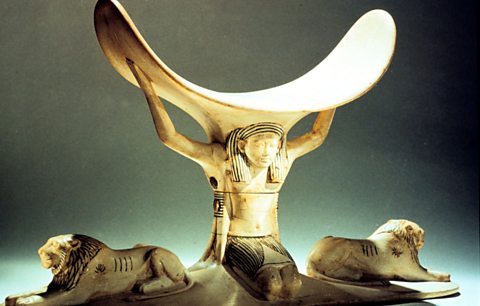
What were ancient bedrooms like?
In ancient Egypt, those who held higher positions in society also slept higher off the floor. Wealthier individuals had single beds, made by weaving a lattice of leather or reed tautly across a wooden frame. Rather than being perfectly level, the beds inclined slightly and so a footrest was required. The bed frame itself would be decorated with carvings.
Instead of the soft pillows we enjoy today, ancient Egyptians positioned their heads on curved headrests, possibly to protect elaborate hairstyles or encourage the circulation of cool air underneath. These were made from a range of materials including ivory, wood and ceramic, none of which sound particularly comfy.
Even less inviting are the sandstone beds at Skara Brae. Some were built into the wall, while others were set into the floor, in two different sizes. It’s thought that animal hides and straw were used to make sleeping a more pleasant experience.
In contrast, wealthy Romans luxuriated on a type of raised bed known as lectus cubicularis. The height of the beds mean that steps were sometimes required to get into them. Typically made of metal or wood, decorative details were added in silver, gold, ivory or tortoise-shell. While ordinary people slept on mattresses filled with dry herbs or straw, the elites had the choice of wool and feathers. Their blankets might have been dyed purple (a colour associated with high social status) and decorated with sewn gold figures.
This article was published in August 2024

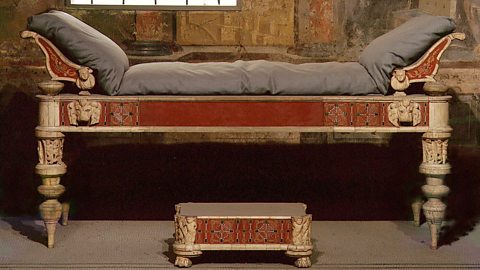
Three incredible ancient frescoes that aren’t in Pompeii
From Egypt to Italy to India, join ґуПуґ«ГЅ Bitesize as we explore three stunning ancient frescoes that aren't in Pompeii.
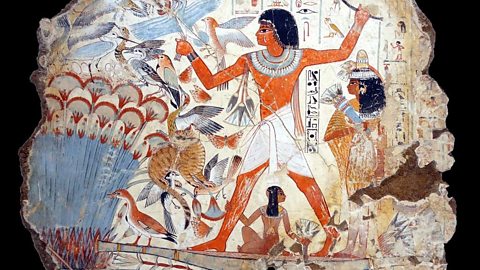
Five amazing ceilings from around the world
Amaze at the stunning artwork that can be found on ceilings worldwide, from stained glass to geometric tiles to informative paintings.

Looking for Atlantis? Five underwater cities from around the world
Dive below the surface and explore these incredible submerged communities.
